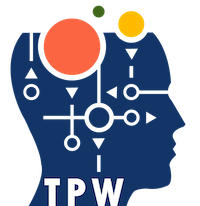The history of psychometric testing is a journey through time, marked by significant developments and innovations. These tests, pivotal in assessing cognitive abilities, personality traits, and occupational aptitude, have evolved considerably since their inception.
The Birth of Psychometrics
The story begins with visionaries like Francis Galton and James McKeen Cattell. Galton, intrigued by the idea of measuring intelligence, initiated the first attempts to quantify mental abilities. Cattell furthered this concept by introducing mental tests in the American academic landscape, laying the groundwork for systematic psychological measurement.

The 20th Century: The Statistical Revolution
The early 20th century witnessed a significant shift with the introduction of statistical methods. Louis Leon Thurstone, among others, played a pivotal role in this transformation. Their work enhanced the precision, reliability, and validity of psychometric tests, propelling the field into a new era of scientific rigor and credibility. Another major leap was due to the introduction of the Stanford-Binet Intelligence Scale by Alfred Binet and Theodore Simon. This test, originally developed to identify children needing special education, became a model for future intelligence tests. The introduction of statistical methods by psychologists like Charles Spearman, who proposed the theory of general intelligence (G), and Louis Thurstone, with his theory of primary mental abilities, further advanced the field. These theories proposed different ways to understand and measure mental capabilities, shaping future test development.
World Wars and the Expansion of Testing
World Wars I and II marked a significant expansion in the use of psychometric tests, especially in the military for personnel selection and placement. The Alpha and Beta tests, used by the US Army during World War I, are notable examples. Post-war, these tests transitioned into civilian life, aiding in educational and occupational settings.

Late 20th Century: Diversification and Technological Integration
The latter half of the 20th century saw the diversification of psychometric testing. Beyond intelligence, tests assessing personality, aptitude, and vocational interests became prevalent. Further, the integration of computer technology revolutionized test administration, scoring, and interpretation, enhancing accuracy and efficiency.
The advent of technology, particularly in the late 20th and early 21st centuries, marked another turning point. Computerized adaptive testing emerged as a game-changer, significantly boosting the efficiency and accuracy of assessments. This technological infusion allowed for more dynamic and responsive testing processes, tailoring difficulty to individual performance levels in real-time.
Ethical Considerations and Cultural Sensitivity
As the field matured, ethical considerations and cultural sensitivity became paramount. The realization that tests could be biased and impact individuals’ lives significantly led to stringent guidelines for test development and usage. This period also saw an increased emphasis on ensuring tests were fair and valid across different cultural and demographic groups.
These evolutionary strides have profoundly influenced various societal sectors. In education, psychometric tests have become instrumental in understanding learning styles and abilities. In the corporate world, they aid in recruitment and talent management. Clinical psychology has also benefitted, with tests providing deeper insights into cognitive and emotional functioning. The far-reaching impact of these advancements is evident in the enhanced understanding and management of human abilities and behavior across diverse domains.
21st Century: Current Trends and Future Directions
Today, psychometric testing is ubiquitous in various domains, from education to corporate settings. Modern tests are more sophisticated, often integrating AI and machine learning algorithms for enhanced predictive power and personalization. The field continues to evolve, with ongoing research focusing on improving validity, reliability, and fairness.
The evolution of psychometric tests reflects a constant quest to understand and measure the complexities of the human mind. From rudimentary beginnings to sophisticated digital assessments, these tests have become integral tools in various fields. As we look to the future, the challenge remains to balance technological advancements with ethical considerations, ensuring that psychometric testing continues to benefit society in fair and meaningful ways.

